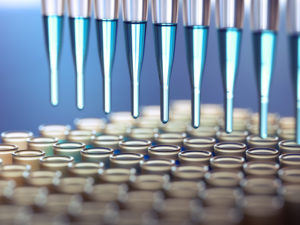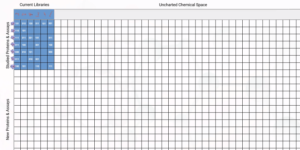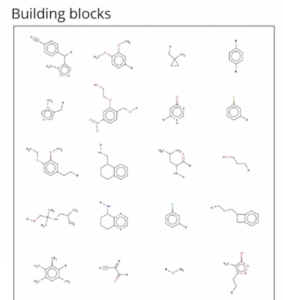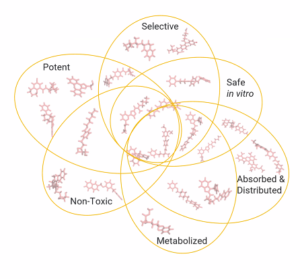
Why AI Alone Won’t Solve Drug Discovery

(maxuser/Shutterstock)
Verseon is an AI-powered drug company–in theory, anyway. The Bay Area startup does use machine learning to help predict which combination of proteins and drug-like molecules will yield novel compounds to test in the lab. With over a dozen drug candidates at different stages of development, Verseon’s approach seems to be working. So when the company’s CEO had some choice words about AI, it was a little bit surprising.
“This is one of the problems,” Adityo Prakash, the CEO and co-founder of Verseon, told Datanami. “People are saying, ‘Oh, AI will solve everything.’ They give you fancy words. ‘We’ll ingest all of this longitudinal data and we’ll do latitudinal analysis.’
“It’s all garbage,” he says. “It’s just hype.”
To be sure, there are misconceptions around AI, what it is capable of, and what it is not capable of. Some people seem to imagine AI as a magical box that generates accurate answers to complex questions based on input data. Have a tough problem? Put AI in the pipeline, and your problem is solved.
In reality, getting AI to work on real-world problems is a lot more difficult than that. While AI can do some pretty cool stuff, its applicability is quite a bit narrower than your average Joe on the street is led to believe.
AI can only solve problems for which there is adequate training data. And considering the enormous expanses of emptiness when it comes to data in pharmacological field, AI really hasn’t even begun to scratch the surface of what’s possible, according to Prakash.
‘Nowhere Close’
Before the interview earlier this month, Prakash read a Datanami story about the recent Accenture study that found only 12% of companies are actually leveraging AI. That strikes a note with Prakash, who seems to suspect that number might be high.

We have barely scratched the surface when it comes to exploring the universe of chemical compounds (Image courtesy Verseon)
“I can assure you, those companies aren’t in the AI medicine space,” the CEO says. “There’s a lot of hype in using quote-unquote ‘AI’ for solving all that ails medicine. But it’s really nowhere close to being used properly.”
The big reason? Biology, it turns out, isn’t a domain for big data, Prakash says. “It‘s a domain of small data,” he says.
While the universe of potential molecular compounds and drugs is essentially infinite, our knowledge of that space is severely limited, Prakash says. The process of testing new compounds is painstakingly slow. Once a potential drug molecule is synthesized by chemists, it is tested against a disease-causing protein to guage its effect.
Robotics are employed here to speed up the process. “It’s called high-throughput screening,” Prakash says. “But it’s basically a fancy name for trial and error.”
The drug giants of the world–the Pfizers, Novartises, and Roches–have the means to ramp up this testing regime. But even with all the billions of dollars these companies put into R&D, their collections of compounds–or drug “backbones” as Prakash calls them–will probably number only 6 or 7 million, collectively, he says.
Compare that to his estimate of the total number of possible chemical compounds in the universe, which is on the order of 10 to the 33rd power.
“You realize, you’re not even fishing in a tidepool,” he says. “You’re fishing in a tiny little shot glass.”
What’s more, that shot glass isn’t even as diverse as it could be, Prakash says, as it’s filled with “me-too” compounds that have the same backbone, the same scaffold, but small little chemical tweaks.
What’s a drug discovery company to do?
Back to Physics
Once you have sample compounds and you know something about them, AI has the power to make predictions for you. It can tell you, based on data from related compounds, what impacts it likely will have on the body, including effectiveness, side effects, etc.

Verseon built a proprietary physics-based modeling library that can piece known 100,000 molecules together in novel ways (Image courtesy Verseon)
But the big problem is coming up with the promising novel compounds to test to begin with, Prakash says. This is where Verseon has taken a novel approach.
“The solution to this is actually doing something a little different,” Prakash says. “The solution to this is to see if we can generate synthetic data, in modern AI parlance.”
Verseon has devised a system that includes a collection of more than 100,000 molecular building blocks that it can piece together, like atomic Lego blocks, according to Prakash.
“You have to first create that virtual ocean of possibility on the computer,” he says. “This is the first time we have an unlimited supply of novel drug-like, but most importantly, synthesizable compounds. It’s a dynamic molecule creation engine. I can point it to any part of that chemical universe and make as many as I want.”
The next step involves a proprietary physics model that determines how novel binders will actually work with real-life proteins. This is where many drug-discovery systems have failed, because they don’t adequately take into account all of the various factors influencing the marriage of drug molecule to protein, including things like where the chemical bonds take place, how the protein will flex, and how water will act as a “chaperone” between the two, Prakash says.
“You have to be able to do this by modeling the molecular physics at a level of accuracy that was impossible before,” Prakash says. “But if you can do that, then you can run against any proteins of interest [and explore] this vast array of possibilities from that chemical ocean to come up with perfect custom designed binders.”
Any given run on Verseon’s HPC cluster can generate upwards of a couple of hundred families of chemical backbones, Prakash says. The company sends the most promising of the theoretical compounds to the chemistry lab, where they are synthetized into actual compounds and tested using the standard methods. If all goes well–and the failure rate of course is high–it then moves onto the clinic for testing.
Proof and Pudding
Prakash says the company originally intended to build this software and then sell it. But after considering how difficult it was to come up with potential drug candidates, and how profitable getting just one successful drug through all the testing phases, it decided to keep its invention and become a drug company instead.

Once physics-based modeling generates possible synthetic compounds, AI can help narrow down the best candidates based on various criteria (Image courtesy Verseon)
“When we originally started the company, our plan was to build a toolset that other people would use,” he says. “[But] on a per-answer basis, the answers are so valuable, you build your own pharmaceutical engine, which is what we have evolved into.”
Verseon has invested about $150 million into building the full platform and the current drug pipeline, the CEO says. The company’s cluster, which is used for HPC modeling and AI, offers about 2 petaflops of computational power, which Prakash expects will grow.
Over the past few years, Verseon has commenced eight drug discovery programs, and currently has 16 drug candidates across three major disease categories, including cardiometabolic diseases, cancer, and infectious diseases. Several of these drugs have completed preclinical trials and are set to begin phase one clinical trials; one has already begun phase one.
The company is bullish on its approach, and claims that the drug candidates it has discovered could not have been found any other way. “Nobody is even remotely close,” Prakash says. “It’s built on fundamental advancements in science that don’t exist anywhere else.”
“These are completely novel molecules that the computer has predicted,” he continues. “I’m actually filling in useful islands of data in that vast chemical ocean.”
Prakash says Verseon’s approach has three main benefits over the traditional approach in the areas of novelty, numbers, and speed. These benefits come down to the interplay between the physics model generating synthetic data, but AI also plays a role, especially in helping to recommend nearby compounds when the library of compounds and its impacts begins to get filled out. The company also uses AI to assist with patient selection.
Both AI and HPC are needed to make this approach work.
“The AI and HPC physics modeling, they work kind of hand in hand to really do this in a way that’s feasible and workable,” he says. “For some things, deep learning is great, when we have dense data somewhere.”
“[But] you cannot just use existing AI tools and pull down some existing libraries and say, ‘Here is some deep learning model,’ and it’s done,” Prakash says. “You need to have the technical chops to be able to modify and build even your own AI tools as necessary to be able to do this.”
Considering the amount of hype heaped on AI for drug discovery, Verseon’s “back to physics” approach is certainly novel and refreshing. It will be interesting to see what new drug candidates the company can generate using this method, and whether it will inspire other companies to take a “me-too” approach.
Related Items:
AI-Powered Drug Development in a Post-COVID World
Investors Flock to AI-based Drug Discovery
How AI Is Accelerating Drug Development for COVID-19































